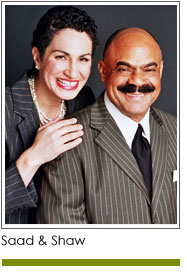 Communication is the name of the game. It’s not just what we say it’s also what we write. How are you communicating with the written word? Do you read your reports, emails, and letters before hitting send? Does the thought of grammar and sentence structure make you roll your eyes and think back to days in English class? Verb, adverb, present tense, commas vs. semi-colons... We know it’s a lot. Like you we try to “hit the mark” with our written communication, and yet there are so many errors and typos just waiting to be made.
Communication is the name of the game. It’s not just what we say it’s also what we write. How are you communicating with the written word? Do you read your reports, emails, and letters before hitting send? Does the thought of grammar and sentence structure make you roll your eyes and think back to days in English class? Verb, adverb, present tense, commas vs. semi-colons... We know it’s a lot. Like you we try to “hit the mark” with our written communication, and yet there are so many errors and typos just waiting to be made.
Unfortunately assessments – even judgments – are quickly formed based on one’s writing. It happens unconsciously, in the blink of an eye. People – including potential donors and funders – make decisions about how to value you, your leadership and the nonprofit you represent based on your writing. Some try to be conscious of their bias, asking themselves, “how did I form this opinion?” but that’s not true of everyone.
There is one way to overcome potentially negative assessments: have someone else review what you write. An extra set of eyes helps ensure your words communicate your intentions. Here are three steps you can take:
1. Designate one person on your team as your “proofreader.” Make sure to schedule your writing so there is enough time for this person to review and edit your work. Don’t ask your proofreader to drop everything and edit. They should have time they can dedicate to your writing, giving it their complete attention.
2. Contract with a copyeditor. This is a worthwhile investment. Be sure to communicate your expectations, and the audience you are writing for so they can look for nuances that can “make or break you.” Over time they will find the right balance between over-editing and under-editing; they will learn your voice; and you will begin incorporating their suggestions into your first drafts.
3. Write proposals that clearly respond to a funder’s guidelines. As with letters and reports, be sure these are reviewed in advance of submission. Your reviewer should have a copy of the funding guidelines, and ideally should be from outside your organization. When we are close to a project we don’t realize that a reader may not understand acronyms, processes, or the need for specific services. We’ve also noticed a tendency to “throw in the kitchen sink” when writing a proposal. Filling a proposal with too much information that is not relevant, and not presented in a logical fashion, can be overwhelming for a reader causing one’s eyes to glaze over!
We close with two suggestions you can implement immediately. Use the spell check function in all programs, including email. Plan your important writing so you can set it aside for a few days, coming back to it with “fresh eyes.” You will be amazed by what you see when re-reading a document.
We want your writing to be right on.
Copyright 2016– Mel and Pearl Shaw
For help growing your fundraising visit www.saadandshaw.com or call (901) 522-8727.
















